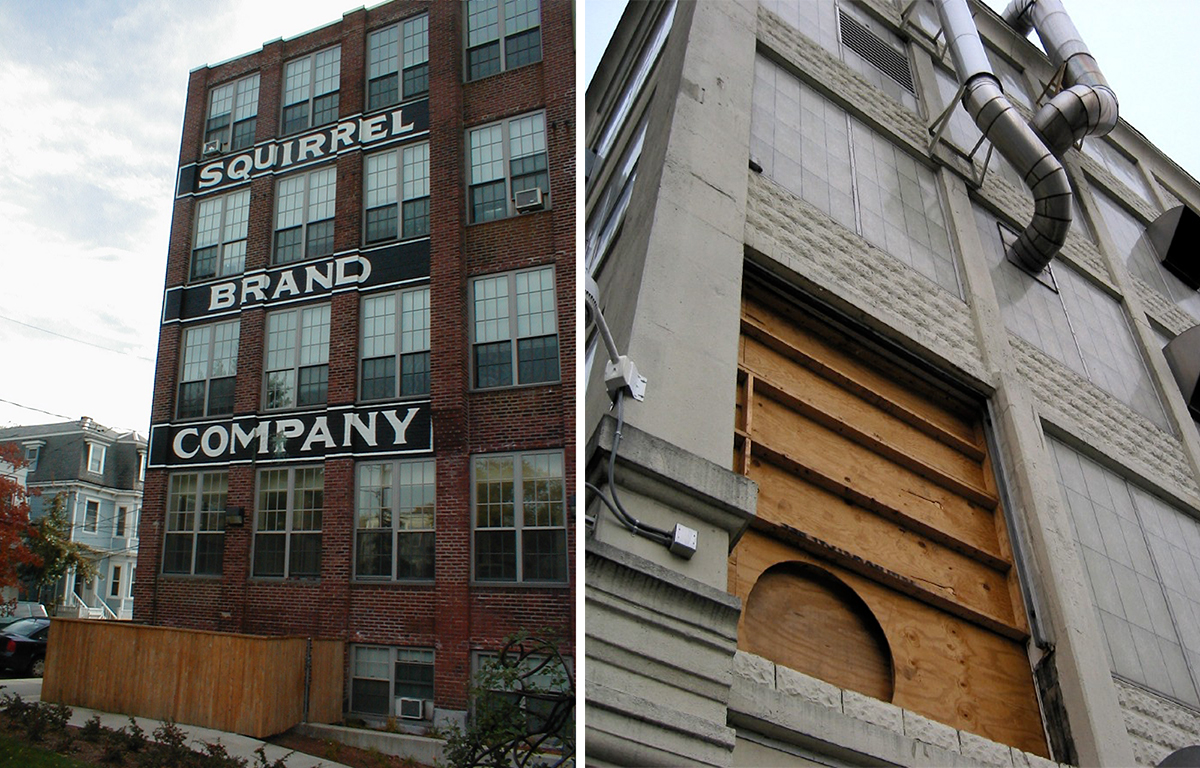A Brief History of Cambridge’s Confectioner’s Row

Photo by Olga Khvan for Behind the Scenes at Necco
Take a stroll down Main Street in Cambridge and you’re bound to see brick buildings, plenty of bicyclists, and a fair amount of factories. Some of the factories have been converted into apartments and condos, but one of them cranks out 15 million sweet-smelling Junior Mints a day.
The candy warehouse at 810 Main Street, now owned by Chicago-based Tootsie Roll Industries, is the last surviving manufacturer once part of an area dubbed “Confectioner’s Row.” Throughout the 1900s, candy companies in Cambridge produced some of America’s favorite treats, including Necco Wafers, Sugar Daddies, Charleston Chews, and Junior Mints. The delicious district grew rapidly—according to the Cambridge Historical Society, there were 16 confectionary manufacturers listed in Cambridge in 1910. In 1920, that number had grown to 30, and by 1946, 66 candy companies had set up shop in town.
Boston’s roots in the candy business can be traced back to 1765 when the country’s first chocolate factory, Baker’s Chocolates, was established in Dorchester. But it was a man named Oliver Chase who got the candy-coated ball rolling with his invention of a lozenge-cutting machine in 1847. It paved the way for the future of candy making, and for Chase, a sweet new business. His company began manufacturing candy wafers and would eventually grow into the New England Confectionary Company, or Necco.
Necco wafers are thought to be the oldest continuously manufactured American product, and from 1927 through 2003, Necco was headquartered in Cambridge. Today, the iconic pastel-colored wafers are still being made just a few miles from Confectioner’s Row in a building in Revere. (You can get a behind-the-scenes look at the Revere factory here.)

Squirrel Brand Company photo by Andrew Kutchling and Tootsie Roll Factory photo by atomicity on Flickr/Creative Commons
For years, other companies like Squirrel Brand Co. and Daggett Chocolates were just a few of the candy makers that made up Confectioner’s Row. Squirrel Brand Co. created vanilla, caramel, and nut taffies called Squirrel Nut Zippers, and according to the New England Historical Society, the company survived from 1890 to 1999 until it was bought out by Necco. Daggett Chocolates, at 400 Main Street, produced more than 40 brands of chocolates. It closed in the early 1960s, just before a tough time for the chocolate industry when companies like boxed chocolate giant Schrafft’s shuttered in Charlestown.
In the decade to follow, candy making in Cambridge and Boston took a turn. As more candy companies joined forces in candy conglomerates, the smaller ones were left behind by brands like Hershey’s, Nestle, and Mars. As such, one of America’s candy capitals waned, and Confectioner’s Row transformed back into regular old Main Street. Yet for almost century, Main Street was indeed sweet.

